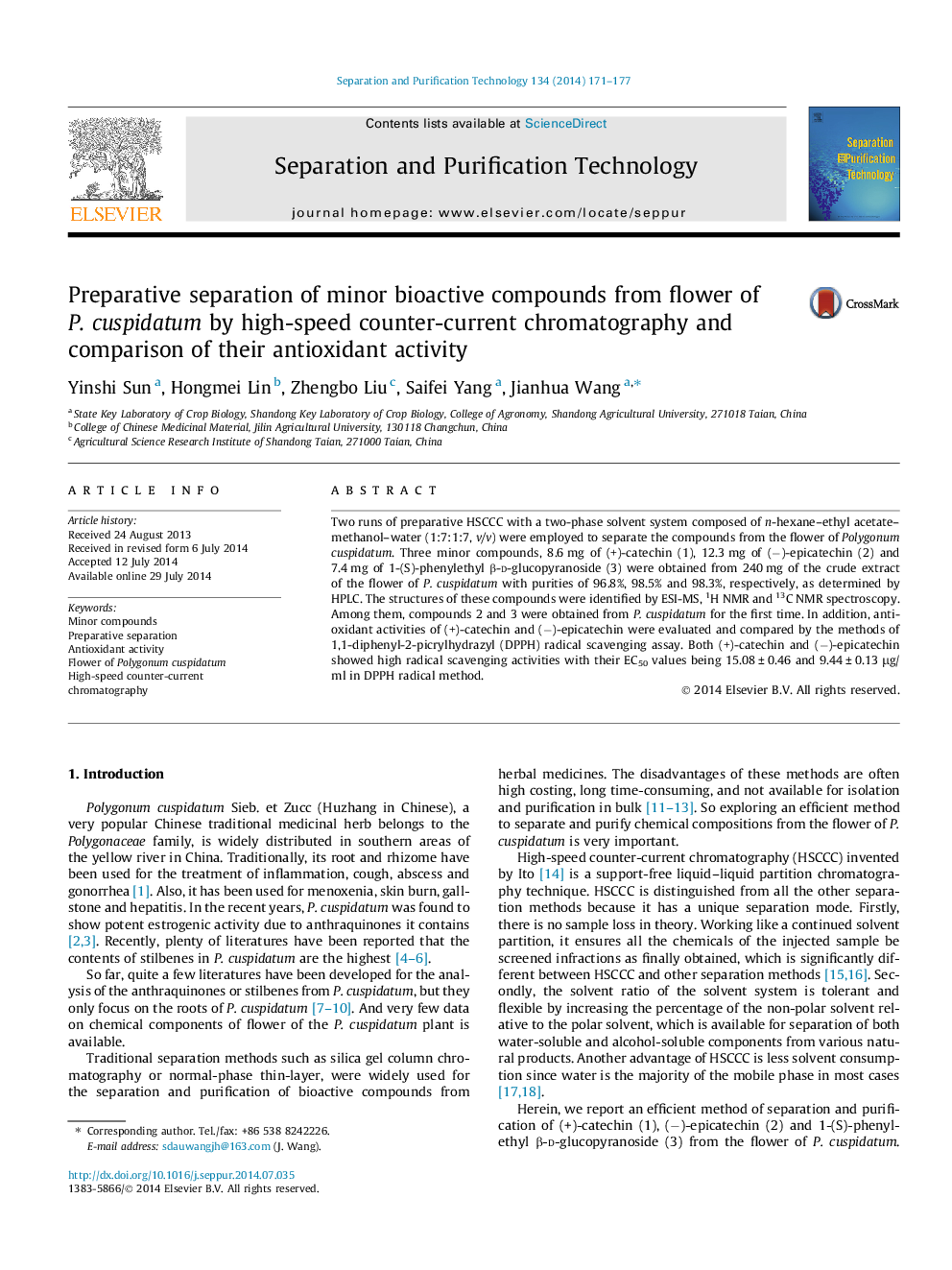| Article ID | Journal | Published Year | Pages | File Type |
|---|---|---|---|---|
| 641167 | Separation and Purification Technology | 2014 | 7 Pages |
•High purity of three minor compounds was successfully obtained.•Two compounds were obtained from P. cuspidatum for the first time.•HSCCC were successfully applied in separation of minor compounds in P. cuspidatum.•Evaluation of two flavonoids antioxidant activity was determined by the DPPH assay.
Two runs of preparative HSCCC with a two-phase solvent system composed of n-hexane–ethyl acetate–methanol–water (1:7:1:7, v/v) were employed to separate the compounds from the flower of Polygonum cuspidatum. Three minor compounds, 8.6 mg of (+)-catechin (1), 12.3 mg of (−)-epicatechin (2) and 7.4 mg of 1-(S)-phenylethyl β-d-glucopyranoside (3) were obtained from 240 mg of the crude extract of the flower of P. cuspidatum with purities of 96.8%, 98.5% and 98.3%, respectively, as determined by HPLC. The structures of these compounds were identified by ESI-MS, 1H NMR and 13C NMR spectroscopy. Among them, compounds 2 and 3 were obtained from P. cuspidatum for the first time. In addition, antioxidant activities of (+)-catechin and (−)-epicatechin were evaluated and compared by the methods of 1,1-diphenyl-2-picrylhydrazyl (DPPH) radical scavenging assay. Both (+)-catechin and (−)-epicatechin showed high radical scavenging activities with their EC50 values being 15.08 ± 0.46 and 9.44 ± 0.13 μg/ml in DPPH radical method.
